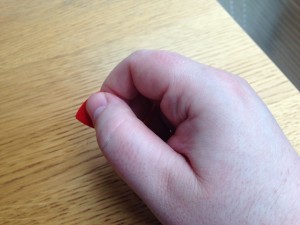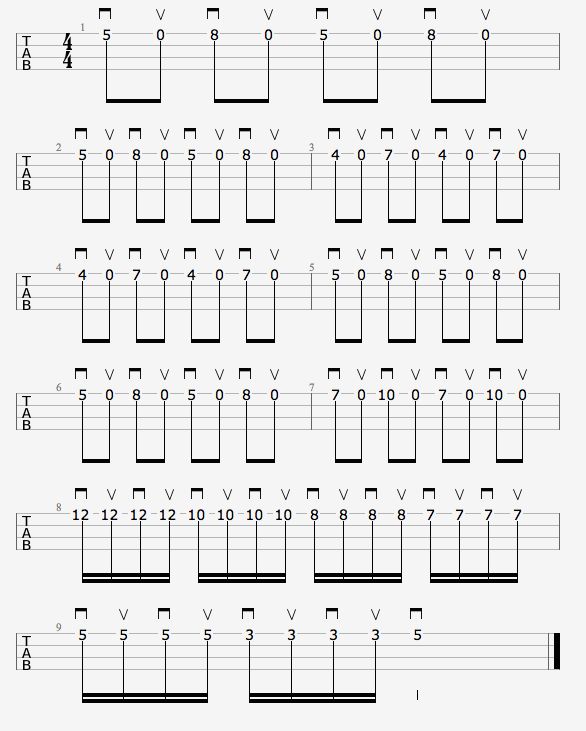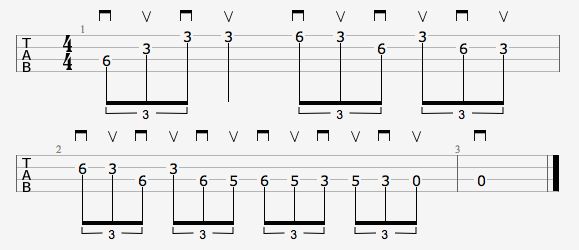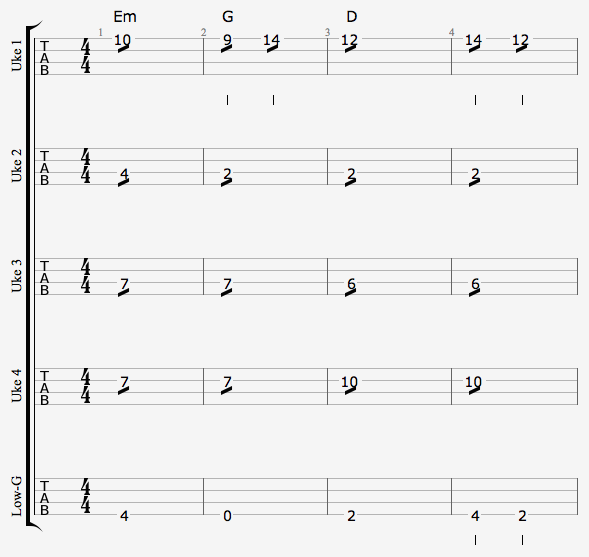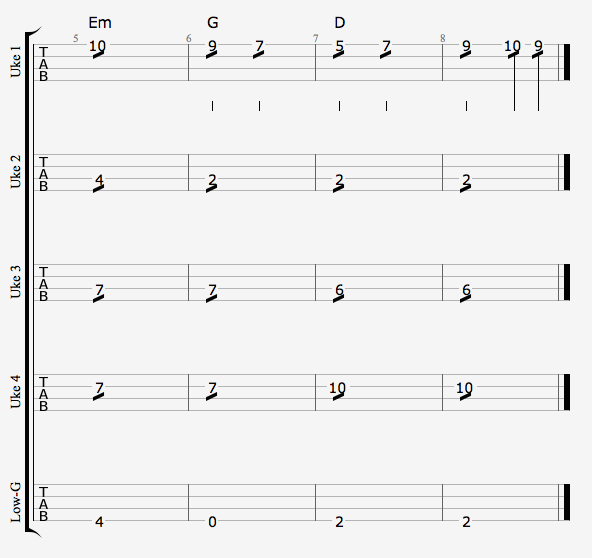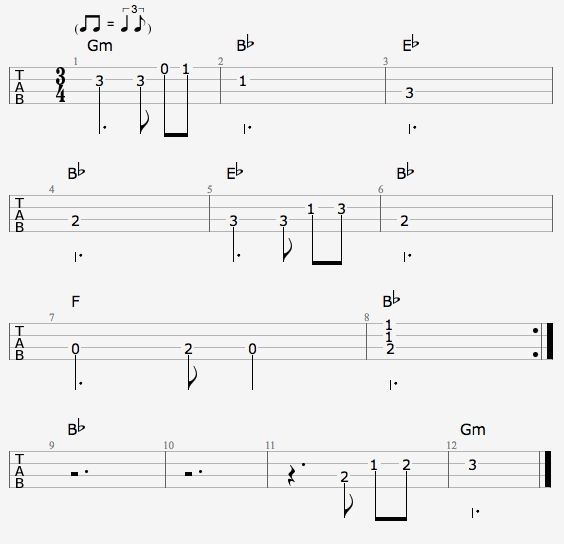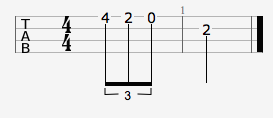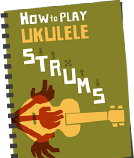Howlin’ Hobbit has had his ukulele stolen. It’s a custom Glyph soprano ukulele. It’s a one of a kind so if you spot it get in touch with him. It looks like this but with more wear.
Ukuleles on Netflix
I’ve watched a few movies featuring ukuleles to various degrees (they’re all on US Netflix because that’s the only good one). If you’ve got any other suggestions leave them in the comments. In decreasing order of ukulele-centricity:
– Jake Shimabukuro: Life on Four Strings: I was worried there was going to be too much Jake-talk (“If everyone played the ‘ukulele there’d be no war” and that) but there’s very little of that and a lot more of Jake’s personal life than I was expecting. Being so personal it gets his philosophy on music across much more effectively than his speeches. I’m not the biggest Jake fan but I really enjoyed the movie and found it very affecting towards the end.
– Austin to Boston: Ben Lovett off of the Mumfords takes a bunch of folky acts on the road: The Staves, Ben Howard, Bear’s Den, Nathaniel Rateliff and Gill Landry (off of Old Crow Medicine Show). Being hipsters, they do it in the most impractical way possible. There are some great bits but it’s very frustrating. Lots lovely music interrupted by pretentious jibberjabber. I don’t know why you’d talk all over The Staves telling us how good their harmonies are when you could just shut up and let us hear it for ourselves. Worth it if you’re not a fan of the new folkies. Otherwise steer clear.
– The Dirties: I loved this film. If you’re into low-budget indie movies I recommend watching it without reading anything about it. Other than the fact that Kate and Janelle pop up for a quick ukulele cameo.
Ukes
– 13 foot long ukulele for sale.
– Makala Waterman ukulele from Kala (everytime I see that I misread it and expect this).
– BanjoUke SideKick.
– Double neck electric ukulele and coffin uke.
New Releases
– New Keston Cobblers Club record Wildfire.
– Helen Arney sings her sciency ukulele songs on the new Festival Of The Spoken Nerd DVD.
Videos
A double bill of tabs from David Beckingham this week. And two tunes I hadn’t heard before but instantly loved: Alley Cat by Danish pianist Bent Fabric and, acoustic guitar virtuoso, Leo Kottke’s Theme from the Rick and Bob Report.
Theme From the Rick and Bob Report
David Beckingham – Theme From The Rick And Bob Report (Tab)
Alley Cat
David Beckingham – Alley Cat (Tab)
Links
I’ve pretty opinionated with my anti-pick stance. I find the common advice of, “Use a pick if you want to, or don’t,” entirely fair and entirely useless advice. I assume you’re here to find out what are think and are capable of rejecting if it’s bollocks.
Despite my anti-pickery I do think there are some occasions where a pick is useful. So here are my tips for using a pick and where I think using one is more effective than using fingers.
Picking Basics
Which Pick?
Over time I’ve moved towards thicker and thicker picks. Now I’m using the Dunlop Jazz III picks which are thick and pointy. That makes for precise picking. On the downside, they do take some getting used to. Picks are pretty cheap (except when they cost $75 a throw) so you can pick up a variety pack and seeing which takes your fancy.
How to Hold It
I like to hold picks between the pad of my thumb and the side of my index finger.
That feels the most secure to me. But plenty of people do well by holding it between the thumb and the tip of the index finger or the tips of the index and middle fingers. Either way, don’t hold the pick with too much pressure and keep your hand as relaxed as you can.
Picking Motion
Don’t let the picking motion come from your elbow. You’ll tire out very fast. Long teenage nights of experience have taught me that swinging from the wrist gives you more stamina than swinging from the elbow.
Move from your wrist. Concentrate on moving the pick as little as you can. It’s not as easy as it sounds.
Rest the underside of your hand against the bridge of the uke so you’re brushing against it a little as you pick.
When I need to pick really fast I put my pinkie on the soundboard. It’s not good technique (because it restricts your movement a bit). I’m working on it but for now I find I need that stability.
To pick really fast you don’t need to move your hand more frantically. Build up speed by making the smallest movement you need to pluck the string.
Best Uses
1: Alternate Picking for Speed
If you need to play a flurry of notes on a string it’s much easier to do that with a pick.
The best way of achieving it is alternate picking i.e. you always pick downstroke, upstroke, downstroke, upstroke etc.
This example has alternate picking all the way through. In tab downstrokes are indicated with a square that has its bottom missing. And upstrokes are a V.
Alternate Picking Across Strings
Alternate picking makes sense when you’re playing one string. It’s not so obviously useful when you’re playing multiple strings. In this example you play a downstroke on the C-string then an upstroke on the E-string. So you have to move the pick past the E-string then come up when it would be quicker to do another downstrum. There are advantages to that way of picking (known as economy picking). But alternate picking keeps your hand moving at a constant rate and gives the notes more definition.
This lick uses the C blues scale (much more about that in my Blues Ukulele ebook if you’re unfamiliar).
2: Tremolo Picking for Sustain
There’s no denying that ukuleles are lacking in sustain. You’re lucky to get much more than a *plink* out of a soprano played up the neck. One way to recreate sustain is to repick the string in a constant rhythm for the length of the note. This is something mandolin players do all the time.
To play them just fret the note then alternate pick the string (usually with eighth notes or sixteenth notes) for as long as the note lasts.
The tab for tremolo is one or more thick diagonal lines under the note. Strictly speaking, one line means eighth note picking and two lines means sixteenth note picking. But that is sometimes ignored by the lazy and semi-competent (i.e. me) and it’s left up to you how quick your tremolo strum is.
This technique is really useful in a ukulele orchestra. You can use it to build up chords one note per ukulele. In this example four different ukes are playing one note each to create an Em – G – D progression with Uke 1 playing a little melody.
3: Bashing the Strings for Attack
The harshness of picks can sometimes be a big advantage. When playing a single string line in a group of strummers a pick really helps you cut through.
I did this UOGB stle version of Misirlou recently (more on that coming later). Using a pick gives the notes a piercing tone that suit the tune perfectly. And when it gets loud at the 1:47 mark you can get an attack that isn’t possible with just fingers.

This work is licensed under a Creative Commons Attribution-ShareAlike 3.0 Unported License.
Elliott Smith – Waltz #2 (XO) (Chords)
Two things prompted me to do this one: tbone rightly chided me for not having done any Elliott Smith yet and my favourite ever episode of Roderick on the Line.
Suggested Strumming
This strum will see you all the way through the song:
d – – u d u
With the intro you need to miss out the down strum on the first bar. So it starts with u d u. You can follow that with the main strum. But I like to do alternate bars of d u – u d u. So that makes the strumming for the very start of the song:
u d u
d – – u d u
d u – u d u
d – – u d u
d u – u d u
Which sounds like this:
Twiddly Bits
That’s followed by this little riff which crops up throughout the song:
Here’s how that sounds against the chords (played on another uke):
Links
Ukes
– Tired of carrying around your ukulele and your flamethrower? Make your own Mad Max style ukulele/flamethrower. (Thanks to Rob.)
– Site dedicated to the history of Ditson ukuleles.
New Releases
– The Wonky EP from Lou and the Llamas
– Craig Robertson cover EP (pay what you like).
– The Jive Aces Spread a Little Happiness (iTunes link).
– Hidden Histories by Arroyo Deathmatch (pay what you like).
Videos
– Play Ukulele by Ear asks Three questions about ukulele ergonomics. Not sure I agree with all his advice but he has some interesting things to say.
Choan Galvez – If I Had You (Tab)
I put Choan’s marvellous version of If I Had You (most known to me in Cliff Edwards’ ukulele version) on the UkeTube a while back. And he was kind enough to send me his tab of it.
The whole piece is full of interesting chord ideas. Even if you’re not going to learn the whole thing I’d recommend playing through the intro (bars 1 and 2), the turnaround (bars 9 and 10) and the outro (bars 30 – 33). You can use these directly in a jazzy piece in A or adapt them for other keys.
Links
Buy the Cliff Edwards version on iTunes
Choan Gálvez on YouTube
We’re coming up to the halfway point of the year so time for roundup of the best ukulele videos of 2015 so far. It’s turning into another vintage year for ukulele music so I had a nightmare time trying to get the list down to a reasonable length. In the end I’ve tried to represent the incredible breadth of ways the ukulele is being used these days.
YouTube is going all out to make itself impossible to use. With being capricious about which videos they show from subscriptions and turning off RSS feeds it’s been harder to keep up. So if I’ve missed something leave a link in the comments and I’ll check it out.
twenty one pilots – We Don’t Believe What’s On TV (Chords)
I’ve been a bit on the fence about twenty one pilots. But I’ve been looking for some good old ukulele punk pop since The King Blues called it a day and We Don’t Believe What’s on TV fits the bill very nicely.
The are some chord inversions in the song you might not be familiar with. I’ve written them up the way I think he’s playing them. But feel free to use inversions that are more familiar like your prefered way of playing E or the 0100 version of A7. If you’re using the chord charts as written remember that the fret number at the top right of some of the diagrams indicates the fret the diagram starts on. For example, the E7 starts with a barre at the fourth fret (not the first).
Suggested Strumming
You can use this as the main strum:
d – d – d u d u
The ‘Tros and the Verses: One main strum each for F#m and E. Then twice for A except the ‘yeah, yeah, yeah’ bits. There do the main strum once, then one down strum. Then either stop or do three down muted strums.
Bridges: Main strum twice for each chord.
Chorus: Just one down strum per chord.
Twiddly Bits
He uses this nice little run at the start of each line in the slowed down version:
After that you go to F#m as usual.
